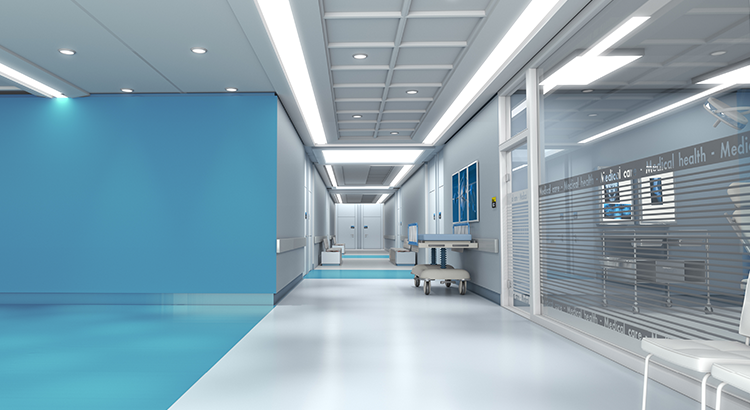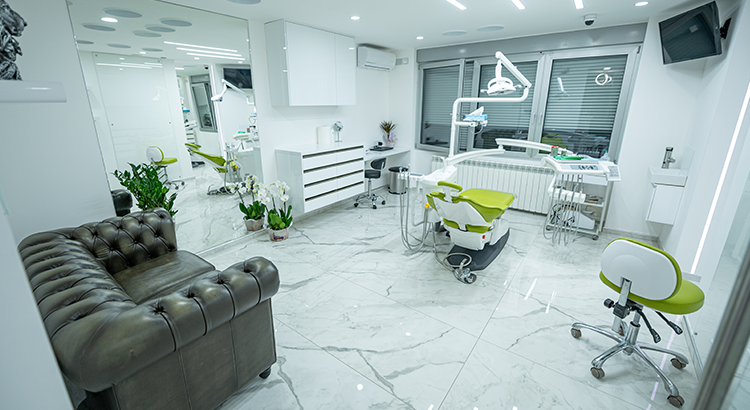A well-designed medical centre fit-out enables patients to feel at ease and comfortable during their medical appointments. An inviting reception area, comfortable waiting rooms, and tranquil treatment rooms significantly contribute to a positive patient experience. This can help reduce anxiety and promote patient satisfaction, resulting in improved patient well-being and enhanced patient loyalty.
To uphold patient safety and quality of service, medical centres in Australia must follow meticulous rules and standards. A well-executed fit-out takes various regulations into account, including infection control, accessibility, fire safety, and hygiene. Compliance with these standards is required in order to get the licenses and certificates required to run a medical centre.
Define your objectives and budget
• Conduct a thorough needs assessment
Specify the overall goals of the medical facility fit-out project. These goals may include boosting patient experience, increasing operational effectiveness, conforming to regulatory standards, accommodating new services or technologies, maximizing space use, or creating a welcoming and practical atmosphere for both patients and employees.
Establish the amount of funds allotted for the fit-out project. Take into account elements like funding sources, financial capabilities, and any restrictions or limitations that can have an impact on the budget. Set aside money for the fit-out’s various components, such as construction, machinery, furnishings, technology, design services, and possible scenarios.
Communicate with important stakeholders, such as medical staff, office personnel, patients, and facility management, to better understand their needs, preferences, and expectations. Examine current processes, the flow of patients and employees, and pinpoint any issues or potential improvements. Take into account the particular requirements of the various medical specializations and the centre’s intended services. Examine regulatory requirements such as connectivity, infection control, fire safety, and building code compliance. Collect feedback on technological requirements, equipment preferences, storage needs, and space utilization.
• Optimize the layout and space utilization
Assess the available space and create a layout that makes the best use of it. To reduce congestion and increase efficiency, consider the flow of patients, personnel, and equipment across the medical center.
Divide the medical facility into functional areas based on the specific demands and activities that occur in every section. This includes reception and waiting areas, examination rooms, consultation areas, administrative spaces, personnel workstations, laboratories, and storage rooms. Design the layout to ensure a logical and seamless transition between these sections.
To optimize functionality, build spaces that can serve multiple functions. A consultation room, for example, could also be used as a small procedure room or a configurable spot for telemedicine sessions.
Integrate technology solutions to maximize space usage. This involves deploying electronic medical records (EMR) systems to reduce paper storage requirements, utilizing telemedicine capabilities to conduct remote consultations, and utilizing digital signs for effective navigation and communication.

- Prioritize essential features and services
When prioritizing vital features and services in a medical fit-out, it is essential to examine the facility’s specific demands and the services it will provide. However, the following are some common necessary features and services that are often emphasized in a medical fit-out:
Examination Rooms: These are the main areas where patients are assessed and treated. Prioritize an adequate number of examination rooms with proper structure and equipment to accommodate patient consultations, examinations, and minor operations.
Waiting Areas: Create pleasant and welcoming waiting spots for patients and their companions. Provide adequate seating, suitable lighting, and amenities such as reading materials or digital screens with healthcare information.
Administrative Spaces: Designate areas for administrative employees to perform responsibilities such as appointment scheduling, patient record management, and invoicing.
Consultation Spaces: Set aside areas for confidential consultations between healthcare providers and patients. These areas should provide seclusion, confidentiality, and a climate conducive to in-depth talks about diagnosis, treatment strategies, and patient education.
Treatment Rooms: Depending on the medical services provided, designate specific treatment or procedure rooms. These rooms should be outfitted with the necessary medical equipment and supplies to provide a sanitary and secure environment for patients and personnel.
Sterilization and infection control: Set up a space for sterilization and infection control processes, such as suitable handwashing facilities, medical waste management, and sterilized equipment and supplies storage.
Diagnostic Facilities: If the medical centre provides imaging services, prioritize the inclusion of specific rooms for X-rays, ultrasounds, MRIs, or other diagnostic procedures. Ascertain that these rooms are outfitted with the requisite apparatus and protection.
Pharmacy: If a pharmacy is integrated within the medical facility, give space for drug delivery, pharmaceutical storage, and pharmacist consultation spaces.
While these are crucial features and services, it is important to tailor the fit-out to your medical centre’s individual needs depending on the medical specialties performed and the intended patient population. Engaging stakeholders and completing a thorough requirements assessment will assist in determining the priority of these features and services depending on your specific circumstances.

Plan for flexibility and future growth
• Choose durable and long-lasting materials
Choose high-quality, long-lasting flooring that can handle heavy foot activity and frequent cleaning. Consider vinyl, linoleum, or porcelain tiles, which are noted for their longevity and ease of upkeep. Choose slip-resistant surfaces as well to improve safety. Select wall finishes that are long-lasting and easy to clean and that can tolerate periodic sanitization. Choose washable and stain-resistant paint or wall panels made of long-lasting materials like fibreglass-reinforced plastic (FRP) or high-pressure laminate (HPL).
Invest in high-quality, robust furniture and seats that can survive frequent use by patients and workers. Choose materials that are easy to clean and stain and wear-resistant. Consider ergonomic designs that increase patient and staff convenience and assistance. Countertops and surfaces in places like reception desks, nurse stations, and examination rooms should be made of durable, non-porous materials. Materials such as quartz, solid surface, and stainless steel are well-known for their durability, stain resistance, and ease of cleaning.
Use materials such as laminate, solid wood, or stainless steel for building sturdy cabinetry and storage units. Make certain that the hardware and hinges are of excellent quality so that they can resist frequent opening and closing. Select fixtures and hardware made of long-lasting materials such as stainless steel or brass. When compared to lower-quality alternatives, these materials are more corrosion-resistant and have a longer lifespan.
• Consider technology integration
To digitize patient records, streamline data management, and improve accessibility, implement an electronic medical records system. Ensure that designated spaces for PCs or tablets for accessing and updating patient information are included in the design.
Incorporate technical infrastructure to facilitate telemedicine services. This may entail installing video conferencing equipment, guaranteeing consistent internet connectivity, and constructing private consulting locations with adequate acoustic and visual privacy.
Integrate communication systems that promote effective communication among healthcare practitioners, personnel, and patients. This can include intercom systems, chat platforms, and video conferencing solutions for seamless collaboration and speedy communication during an emergency.
Consider interactive kiosks, digital signs, or patient portals that provide information about services, waiting periods, appointment scheduling, and educational materials. These solutions improve patient engagement and allow patients to take an active role in their healthcare.
• Allow for scalability and adaptability
Make a layout that is adaptable and can be quickly changed or reconfigured as needed. Modular walls, movable partitions, and furnishings can be easily adjusted to fit changing space requirements. Plan for sufficient electrical and data infrastructure to accommodate future technology updates and expansions. To accommodate future equipment and systems, install more electrical outlets, network ports, and cabling.
Choose technology systems and equipment that can be expanded and integrated with new advances. Consider scalable systems that can adapt to future needs without requiring a total infrastructure rebuild. Create a scalable IT network structure that can handle rising data traffic, new devices, and expanding connectivity needs. Consider cloud-based solutions that are scalable and adaptable.
Engage professionals with expertise in medical fit outs
Seek design and construction professionals with healthcare experience. Conduct online research to identify architectural firms, interior designers, and construction companies that specialize in healthcare projects in Australia. Visit their websites to learn about their areas of specialization and portfolios.
Ask for recommendations from healthcare experts, medical organizations, or facility administrators in your network. They may have worked with or know someone who has worked with healthcare design and construction experts. Personal recommendations could offer useful information and assist you in choosing respectable professionals.
Attend industry events, seminars, or trade exhibitions focusing on healthcare design and construction. These events allow you to network with industry professionals and obtain firsthand information about their skills and talents.
After you’ve narrowed down your list of potential design and construction specialists, contact them to request proposals. Examine their background, portfolio, approach to healthcare initiatives, and capacity to satisfy your requirements.
Frequently Asked Question
• What are the benefits of High-Quality Medical Centre fit out?
The advantages of a medical centre fit-out are numerous, and they contribute to the facility’s efficient and effective operation. Here are several significant advantages:
Improved Patient Experience: A well-designed medical centre fit-out provides patients with a welcoming and comfortable environment. A well-planned layout, appealing furnishings, and simple wayfinding all contribute to a better patient experience, lowering anxiety and increasing overall satisfaction.
Increased Staff Productivity: Orderly and well-designed medical fitouts assist staff in efficiently executing their jobs. Adequate storage, comfortable workspaces, and optimum room layouts help healthcare providers give care more efficiently by eliminating needless processes and optimizing workflows.
Compliance with Regulations and Standards: A medical centre fit out assures compliance with healthcare-specific regulations and standards. Infection control, privacy, accessibility, fire safety, and other regulatory standards are all taken into account to ensure patient safety and operational compliance.
Technology Integration: An organized fit-out enables the smooth integration of technology systems and equipment. This makes it easier to use electronic medical records, telemedicine, medical imaging, and other modern technologies to improve patient care, data management, and operational efficiency.
Positive Brand Image: Visually pleasing and well-functioning medical practice fitouts generate a strong brand image. It fosters patient trust and confidence, supporting the perception of high-quality care and professionalism.
Cost Savings: A well-planned fit-out can result in long-term cost savings. Operational expenses can be decreased by optimizing processes, increasing efficiency, and introducing long-lasting and energy-efficient components. Furthermore, a well-designed fit-out reduces the need for future restorations or alterations, reducing possible interruptions and costs.
NEED HELP WITH YOUR MEDICAL FIT OUT AND CONSTRUCTION PROJECTS?
Brandboy Australia is one of the best-trusted construction and fit-out companies in Australia. We have worked with some of Australia’s largest firms in various sectors, including the medical and healthcare industries. Our team assists you in transforming spaces and bringing your brand to life.
Brandboy has a national network of dependable contractors that we pick using a dependable ranking system. We rate contractors across Australia in a methodical manner to ensure that the right contractor is assigned to the right project. We also double-check all insurance and licenses to ensure that we are in compliance adhere to Australian standards.
Our Brandboy team specializes in the renovation, building, fit-out, remodelling, and maintenance of the property and facilities. We can be involved in fit-out and refurbishment, joinery, signage, carpentry, fittings, electrical and data cabling, plumbing, painting, glazing replacements, solar panel installation, façade, flooring, roofing, digital transformation, and other associated services.
Contact us at 0451 816 788 or send us an email at lars@brandboy.com.au to learn more about how we can assist you in the implementation of your medical fitout projects.

